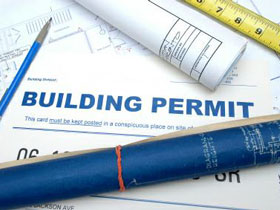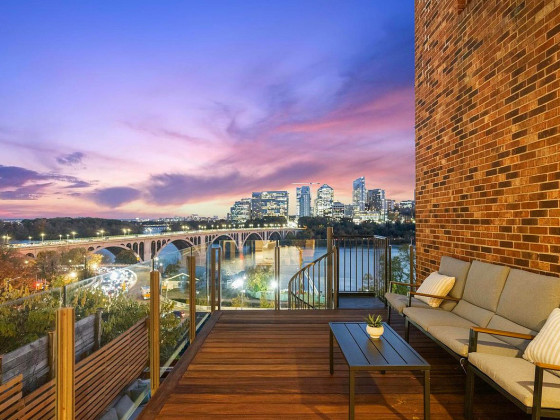 Renovating? A Quick Rundown Of How to Get Permits
Renovating? A Quick Rundown Of How to Get Permits
✉️ Want to forward this article? Click here.

This article, originally published in 2012, has been updated to include new links and additional information regarding the permitting process.
For the past few years, the Department of Consumer and Regulatory Affairs (DCRA) has been attempting to make the much-feared permit-acquiring process easier for those eager to renovate their home. The agency now offers a good online overview, but UrbanTurf wanted to provide a quick rundown on a few things that stood out to us.
Do You Even Need a Permit?
For those doing something like putting up cabinets, replacing a patio, or replacing less than 160 square feet of drywall (not in a historic district), a building permit is not required.
However, a building permit will be required if you want to do any of the following: new construction and foundations, additions, alterations, demolition, construction of retaining walls, fences, sheds or garages, erection of signs/awnings or layout of interior space for tenants in new or existing commercial buildings (e.g. changing the floor plan of a building from six one-bedroom apartments to three two-bedroom apartments).
Postcard Permits
For many minor projects, like repairing a porch or replacing interior wall coverings, the renovator will need to get a postcard permit. These permits can be purchased online and should be taped up on your door for the duration of the project. Electrical, mechanical, plumbing and gas fitting work must be completed by a licensed contractor, and the postcard permits will be issued to them. You can apply for a postcard permit here.
Other jobs that can be completed with postcard permits include: installation of one plumbing fixture, installation of no more than ten electrical outlets, replacement of up to four stories of a single interior stairway, and interior demolition of non-bearing elements in a space up to 5,000 square feet. A complete list can be found here.
Homeowner’s Center
In 2006, DCRA opened the Homeowner’s Center, an office within the agency designed to help renovators with the permitting process. Walk-ins are welcome, and we hear that the staffers are helpful. The office can guide you through what you need to do and sometimes print permits on the spot. If you need more than a postcard permit, a visit to this office at 1100 4th Street SW (map) will be required.
The ease of getting a permit depends on the scope of the project. For example, if you want to replace less that 500 square feet of drywall or remodel your kitchen, you can get an EZ Permit, usually issued by the DCRA the same day that the application is filled out. For large additions over 3,000 square feet, you will likely need to wait at least a month for the office to approve your project. If you want to build a smaller addition, the DCRA aims to complete the approval process within 14 days.
Historic Districts
If you are undertaking a project in a Historic District, you may need to get approval from the Historic Preservation Office (HPO). The approval necessary depends on the scope of the work. A rundown of the process can be found here, but below is a quick synopsis.
- For very small projects, like non-structural interior demolition and landscaping, you do not need approval from the HPO.
- For minor and routine projects, like creating a patio, a skylight or putting in a HVAC system, you will need approval, but can usually get it the same day you walk into the HPO.
- The next step up includes roof decks, penthouses not visible from the street and window and front door replacement. These require more attention from the HPO, so the renovator may need to schedule a meeting with an HPO staffer.
- For major projects, like large additions, curb cuts, and alterations of architectural features, the renovator will need concept approval from the Historic Preservation Review Board before securing permits from the Historic Preservation Office. This is a longer process and may take a few months. The one doing the renovations will have to apply to get on their meeting schedule. (For work in Georgetown or near Rock Creek Park, you may need approval from the Commission of Fine Arts Review.)
This is a rough but hopefully helpful guide. Readers, any other tips for potential renovators?
See other articles related to: dclofts, dcra, renovation, renovation permits
This article originally published at https://dc.urbanturf.com/articles/blog/renovating_a_quick_rundown_of_how_to_get_your_permits/5397.
Most Popular... This Week • Last 30 Days • Ever

With frigid weather hitting the region, these tips are important for homeowners to ke... read »

Today, UrbanTurf offers a brief explanation of what it means to lock in an interest r... read »

A new report from DC’s Office of Revenue Analysis highlights how millennials and wo... read »

An application extending approval of Friendship Center, a 310-unit development along ... read »

The 30,000 square-foot home along the Potomac River sold at auction on Thursday night... read »
DC Real Estate Guides
Short guides to navigating the DC-area real estate market
We've collected all our helpful guides for buying, selling and renting in and around Washington, DC in one place. Start browsing below!
First-Timer Primers
Intro guides for first-time home buyers
Unique Spaces
Awesome and unusual real estate from across the DC Metro













